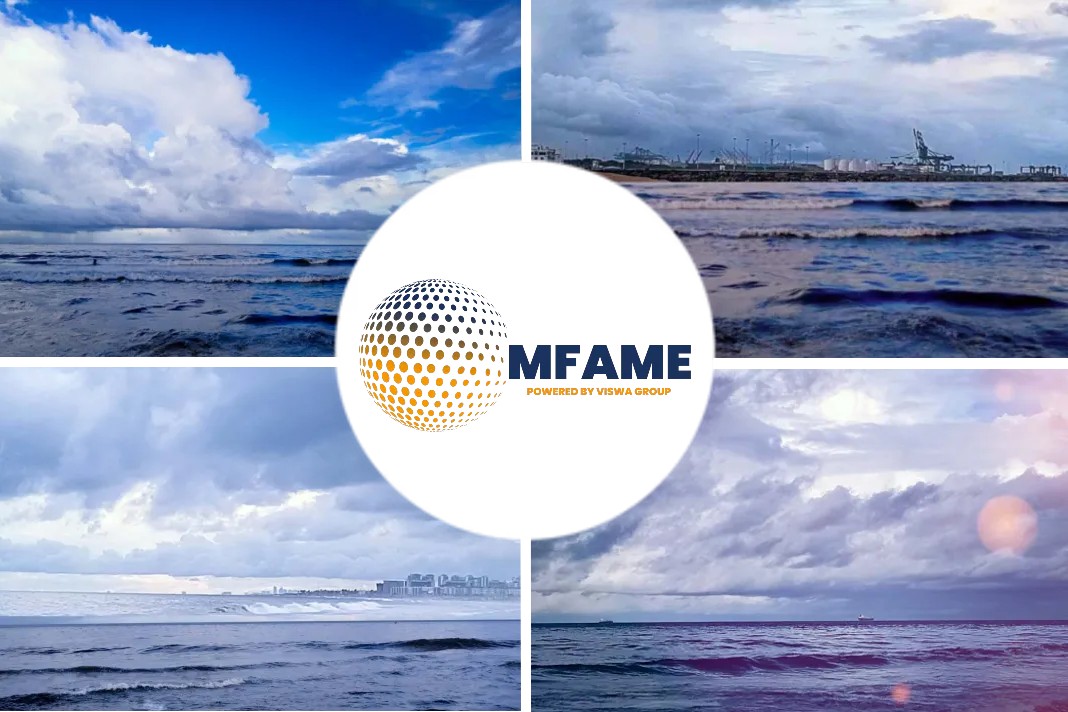The new international limit for sulfur emissions is prompting a shift toward a controversial technology, writes Lina Zeldovich in an article published in Hakai Magazine.
Fresh air awaits in coastal cities
If you live in Coastal city with a large port,January 2020 might bring you a bit of fresh air. The ships arriving at your docks should be puffing out cleaner exhaust with significantly less sulfur.
What is the reason behind the Sulphur cap?
The burning of ship bunker fuel emits gases called sulfur oxides (commonly called SOx), which can cause respiratory problems and lung disease and can react with the water in clouds to create acid rain.
The United Nations’ International Maritime Organization (IMO) is lowering the maximum allowable sulfur content in bunker fuel from 3.5 percent to 0.5 percent, starting next year.
This new, tighter limit will help avoid an estimated 570,000 premature deaths worldwide from 2020 to 2025, according to a study submitted to the IMO by Finland in 2016.
Regulation is good though meeting deadline seems hard
While this new limit may be good news for the health of people and the environment, the shipping industry is finding the deadline hard and expensive to meet.
Some environmental organizations are questioning whether the cheaper solutions are safe for marine ecosystems.
Options available for compliance
One option for shipping companies is to switch to low-sulfur fuel. But shipping companies say this more refined fuel is expensive and still needs to be tested for safety and efficiency.
Another option, approved by the IMO, is to install a scrubber: a device that uses either water or chemicals, or both, to turn sulfur oxides in exhaust into sulfuric acid, and then into disposable sulfate salts.
Scrubbers too a significant expense
With the deadline looming, says Christopher Fee, general manager of environment and sustainability at Oldendorff Carriers, some ship operators are scrambling to get in line for scrubber installation.
Scrubbers can also be a significant expense, particularly for smaller companies and ships. “[Our ships] cost 25 million dollars, so if you add a five-million-dollar scrubber on it, it changes things,” says Marc Gagnon, director of government affairs and regulatory compliance at Fednav Limited, a Canadian shipping company.
Ram Vis, president and CEO of the international technology company Viswa Group, which manufactures scrubbers and tests fuels, says that a retrofit for a typical 290-meter-long bulk carrier such as a Panamax ship (which just fits through the Panama Canal) costs US $2-million.
That’s cheaper, he notes, than the additional expense from a couple of years’ worth of low-sulfur fuel.
Cost pushes few to opt open-loop
In part because of cost, some companies opt for open-loop scrubbers, which discard some of their waste water into the ocean en route.
These are typically cheaper and smaller than closed-loop scrubbers, which store their discharge in tanks for disposal in port. Some ships simply don’t have space for that, Gagnon says.
The Exhaust Gas Cleaning Systems Association reported that, of the 1,500 ship exhaust scrubbers installed or on order as of May 2018, 63 percent were open-loop.
Reasons given to ban open-loop scrubbers
But some countries, including China and Singapore, recently banned the use of open-loop scrubbers in their waters because of environmental concerns.
Lucy Gilliam, aviation and shipping officer at Transport and Environment, a Belgium-based environmental NGO, says that open-loop scrubber discharge may alter ocean water chemistry; prior studies have expressed concern over increasing ocean acidification.
Plus, the discharge may contain heavy metals or other contaminants. There are many different models, she notes, and there isn’t enough research to compare them. “Not all scrubbers are the same and the industry hasn’t been good at sharing data,” she says.
A German report to the IMO noted that “a significant quantity of chemical substances will be emitted to the marine environment” by open-loop scrubbers, and concluded that more effort should be taken to monitor scrubber discharge.
Tested results show technology is safe
Industry-led organizations consider the technology safe. The Clean Shipping Alliance (CSA) 2020 tested the effluent from open-loop exhaust gas cleaning systems on more than 50 cruise ships and concluded the scrubbers were “effective and safe,” according to CSA executive director Ian Adams.
Fee notes that “after sodium and chloride, sulfate is the most common naturally occurring ion found in seawater.” So, he says, “there is no cause for concern.” He adds that many other countries, like the United Kingdom and Australia, approve their use.
While the debate continues, shipping companies continue to install scrubbers, while also testing new, low-sulfur fuels, for the tens of thousands of ships in the global merchant fleet.
“For a very large shipping line, with a global network, it makes sense to have a combination of these solutions,” says Giles Broom, spokesperson for the Mediterranean Shipping Company.
Did you subscribe to our daily newsletter?
It’s Free! Click here to Subscribe!
Source: Hakaiagazine

























